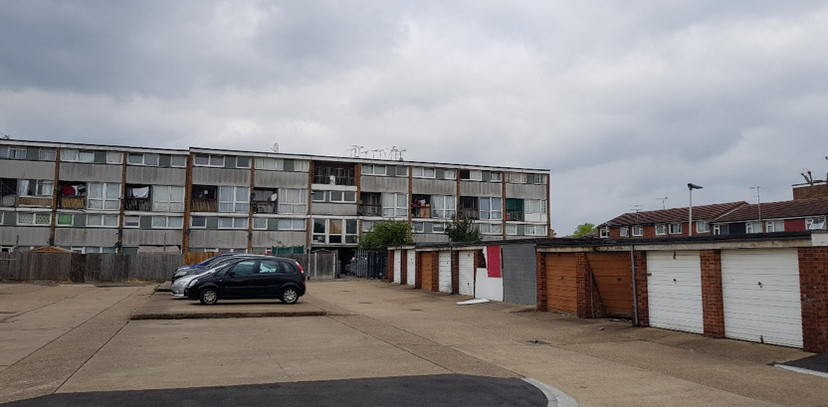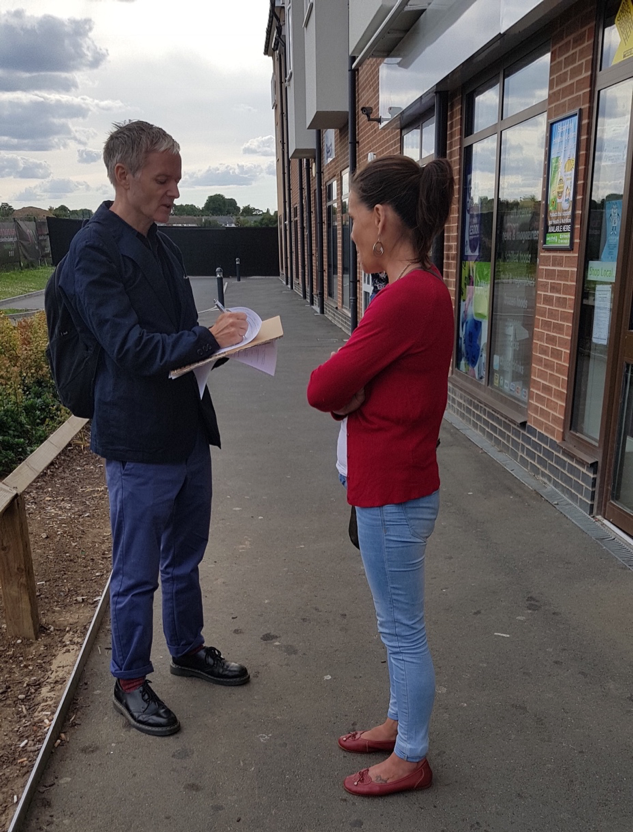
This blog is written by KiWon Lee, who is currently on secondment at Social Life from the Urban Regeneration Division of Seoul Metropolitan Government. His placement is allowing him to learn about Social Life’s approach to understanding the relationship between people and the places they live.
In July I visited Craylands Estate & Beechwood Village with Social Life researchers who were meeting with stakeholders and residents to kick-off a study of the area. For me, the visit was a good opportunity to understand how Social Life approaches researching places, as well as seeing a part of Britain which shares features with some of the areas I work in on the outskirts of Seoul, like Jangwi - a peaceful suburb of the city.
Craylands Estate was built in the 1960s to the east of Basildon town centre. Basildon is a ‘New Town’, meaning much of the town was constructed in the post-war years. Many early residents of the town came from London’s East End, where bomb damage and over-crowding meant housing conditions were poor. Many of the houses in Jangwi were built during the same period, around 40 to 50 years ago. However, for Seoul this is considered an older neighbourhood.
The estate is now undergoing a £200 million regeneration process led by Swan Housing, a housing association based in East London and Essex. Through this process new homes are being built and a portion of the estate’s original homes are being taken down. This will create an architecturally mixed neighbourhood, as well as bringing many new residents into the area. The new parts of the estate have been named Beechwood Village.

Old and new part of the estate side-by-side
Though not far, it took almost two hours from Stratford station in east London to Craylands by car. While riding in the car, the sky in harmony with the cumulus clouds was amazing. Once we arrived at Craylands, we took a walk around the estate, taking note of the interaction between the new and old buildings, and observing how residents use the space.
In the older section of the estate, we found some buildings in a state of disrepair. Many of the 1960s maisonettes have been emptied of their original tenants and are set to be demolished through the regeneration. Temporary residents are often housed during these periods as the lengthy process of regeneration continues.
We found few people on the streets and in the area’s green spaces, even though there was good weather. There were however children playing outside in some parts of the neighbourhood. It reminded me of the peaceful atmosphere of a residential district such as Jangwi.
Even though there were not many people around, there was a constant stream of people coming in and out of the local mini-market – the only shop on the estate. Here, it was possible to see that many residents know one another as they said hello or stopped to chat outside the store. Social Life researchers are interested in such interactions, which can point to the breadth of social relationships in an area. They are also interested in finding the places where people meet and socialise in their communities - sometimes these local assets can be found in unexpected places.
They used this busy location to test out the street interview survey they had developed to find out how residents feel about their neighbourhood. Through street interviews researchers are able to speak to many residents who might not participate in other forms of research, such as focus groups. Many people were friendly and a few people stopped to complete the questionnaire.

Testing out the street interview survey
The survey explored residents’ feeling about the area and local life – from their sense of belonging, to feelings of safety, and what underlies these perceptions. Social Life tries to understand not only what the issues are facing a neighbourhood but also what residents value about their local area.
During the day we also attended a meeting of the area’s new residents’ association, which included some of Swan Housing’s team. A wide range of issues affecting local residents were discussed. Everyone took an active part in the discussion and I was impressed that equal attention was given to big and small matters alike.
This visit was the first of many more that Social Life undertook in the area. Researchers spoke with many residents through street interiews, as well as conducting interviews with local stakeholders. They also examined official data on the area in order to create an in-depth portrait of the neighbourhood.
Using such techniques to understand how change in the built environment affects communities is important for my work at Seoul's urban regeneration division, where we are currently planning many large-scale residential neighbourhoods and buildings. In the area of Jangwi alone we are building 24,000 new homes. Our challenge is to ensure these new developments are good places to live, and enable individuals and communities to thrive.